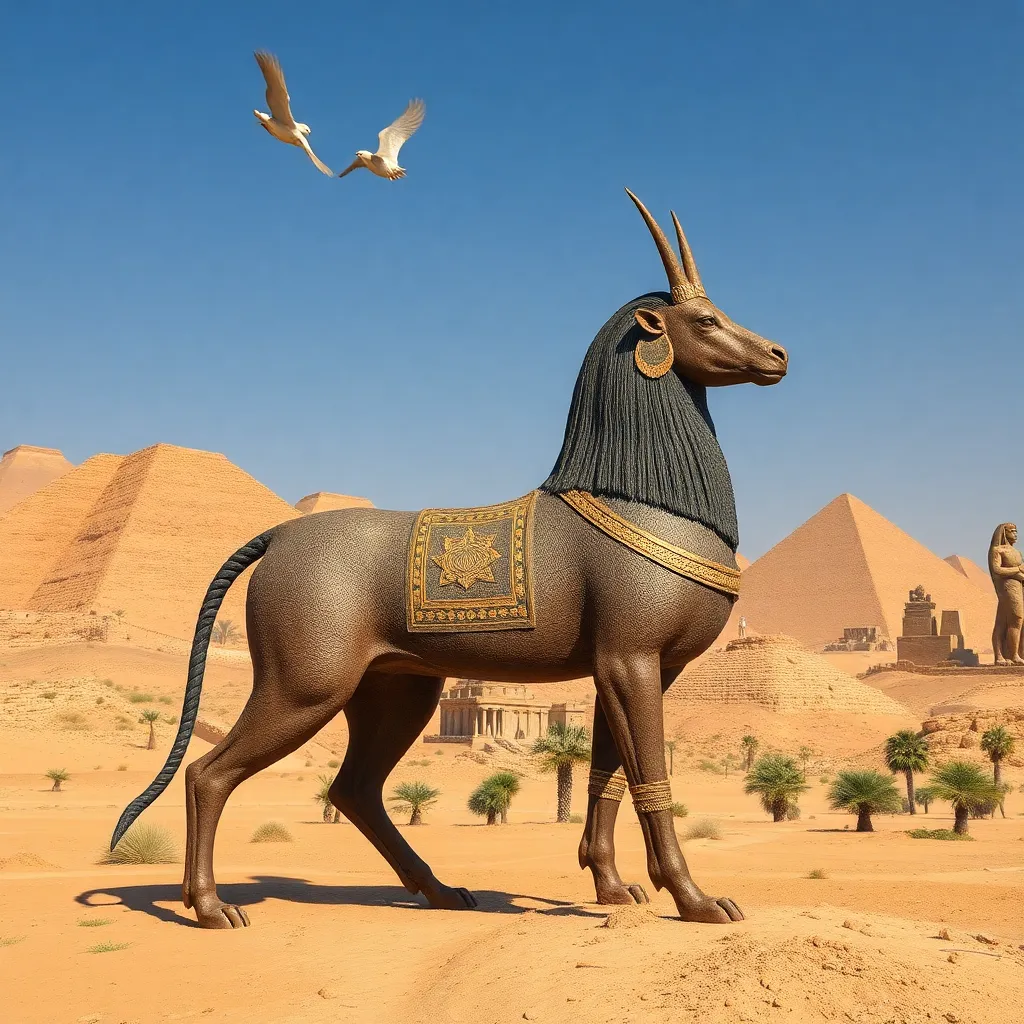The Role of Sacred Animals in Atenism
I. Introduction
Atenism, a religious movement originating in ancient Egypt, was characterized by the worship of the sun disk, Aten, as the sole deity. This monotheistic approach marked a significant departure from the traditional polytheistic practices that had dominated Egyptian religion for centuries. In this context, sacred animals played an essential role, serving as symbols of divine power and messengers of the gods.
This article aims to explore the significance of sacred animals within the framework of Atenism, examining their symbolism, ritual practices, and the impact of Atenist beliefs on ancient Egyptian culture.
II. Historical Context of Atenism
Atenism emerged during the reign of Pharaoh Akhenaten, approximately 1353-1336 BCE. Akhenaten introduced a radical shift in religious thought, promoting the worship of Aten over the pantheon of traditional Egyptian gods.
The socio-political environment of the time influenced this transition. Akhenaten aimed to centralize power and diminish the influence of the powerful priesthood associated with Amun and other deities. This shift was not merely religious but also reflected broader changes in governance and society.
III. Symbolism of Sacred Animals in Atenism
In Atenism, several animals were regarded as sacred, each embodying specific attributes and meanings:
- Cats: Symbolizing protection and fertility, cats were revered for their hunting prowess and grace.
- Scarabs: Representing rebirth and regeneration, scarabs were associated with the sun’s cycle and the idea of renewal.
- Hawks: As symbols of the sky and the sun, hawks were linked to the god Horus, representing kingship and divine protection.
The symbolic meanings of these animals often paralleled their roles in traditional Egyptian beliefs, where animals were seen as earthly manifestations of divine powers. However, Atenism’s focus on a singular deity altered the context of these symbols within religious practices.
IV. The Sun Disk and Animal Associations
The sun disk, or Aten, held profound significance in Atenism. As the central figure of worship, Aten was often depicted radiating light and life, with rays extending towards humanity.
Several animals were closely associated with the sun and its attributes:
- Rams: Symbolizing strength and fertility, rams were often linked to the sun’s life-giving energy.
- Snakes: Representing transformation and protection, snakes were seen as guardians of the sun’s power.
The relationship between the sun and these sacred creatures emphasized the interconnectedness of nature, divinity, and the cycle of life, reinforcing Atenism’s core beliefs.
V. Ritual Practices Involving Sacred Animals
Rituals and ceremonies in Atenism frequently featured sacred animals, which played vital roles in worship and offerings. These practices were intended to honor Aten and seek his favor.
Some common rituals included:
- Offering food and incense to sacred animals as intermediaries between worshippers and Aten.
- Processions involving animals, symbolizing the connection between the divine and earthly realms.
- Festivals celebrating the sun’s cycles, where animals were central figures in the festivities.
Archaeological evidence, including temple inscriptions and artifacts, reveals the prominence of these animals in religious practices and their significance to the worship of Aten.
VI. Sacred Animals in Atenist Art and Iconography
Atenist art provides insight into the role of sacred animals in this religious movement. Animals were often depicted in a stylized manner, emphasizing their divine attributes. Common themes included:
- Animals shown basking in the rays of the sun disk, symbolizing their connection to Aten.
- Dynamic representations of animals in motion, highlighting their vitality and energy.
- Incorporation of animals in royal iconography, reinforcing the pharaoh’s divine connection to Aten.
Specific artifacts, such as the reliefs found in the temples of Akhetaten, showcase the artistic representation of sacred animals and their significance in understanding Atenism’s ethos.
VII. The Decline of Atenism and Its Sacred Animals
The decline of Atenism began shortly after Akhenaten’s reign, as subsequent pharaohs reinstated traditional polytheistic practices. Factors contributing to this decline included:
- Political instability and economic challenges that favored a return to established religious norms.
- The reassertion of the powerful priesthoods, particularly that of Amun, which marginalized Atenist beliefs.
As Egyptian society transitioned back to polytheism, the fate of sacred animals associated with Atenism was uncertain. Some retained their symbolic meanings, while others were reinterpreted within the context of the revived pantheon.
The legacy of Atenism, however, continued to influence later Egyptian culture, as it introduced concepts of singular divine worship that echoed in subsequent religious developments.
VIII. Conclusion
In summary, this exploration of sacred animals in Atenism reveals their critical role in the religious practices and beliefs of ancient Egypt. From their symbolic meanings to their involvement in rituals, these animals served as vital connections between the divine and the earthly.
Understanding the significance of sacred animals within Atenism not only enhances our knowledge of this unique religious movement but also sheds light on broader themes in the study of ancient religions and cultural practices. The interplay between animal symbolism and divine worship continues to resonate in the narratives of human spirituality.




